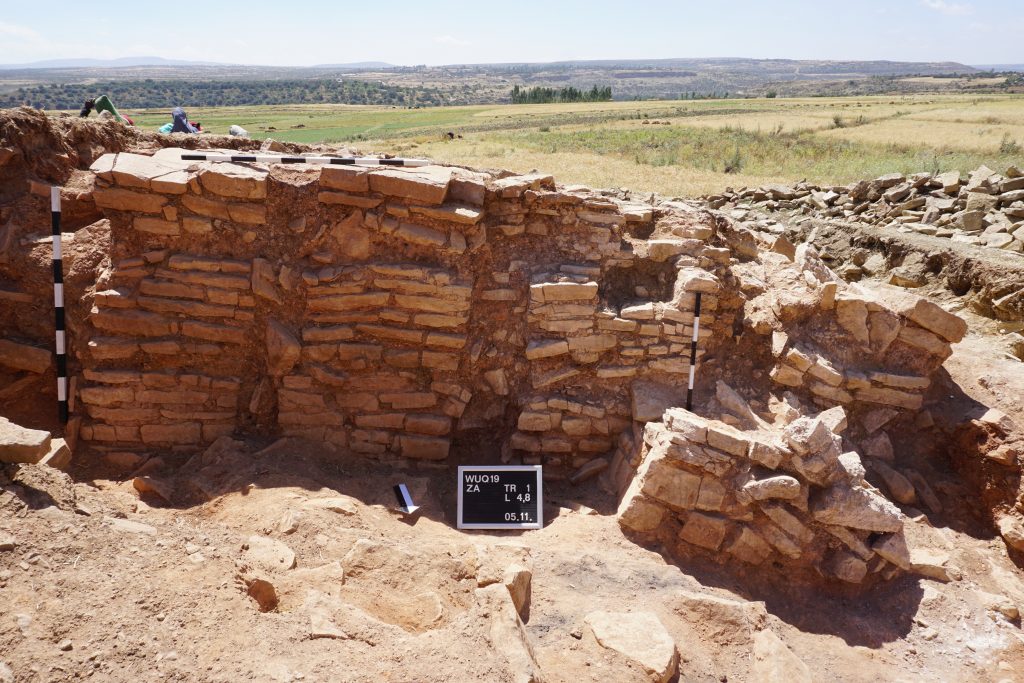Ethiopian-German research at the site of Wuqro / Tigray (Project phase 2016–2020)




The cultural transfer between South Arabia and the Northern Horn of Africa in the 1st mill. BCE has so far been rarely studied. In particular, the role of the indigenous population and its material culture and architecture is largely unclear during this period. The site of Wuqro is not only politically and ideologically close to Yeha because of the altar inscription found in the Almaqah Temple, but also marks the site the southeastern border of the Ethio-Sabaean cultural area. Although the cult inventories and the inscriptions from the Almaqah Temples show a clear Sabaean influence, a large part of the ceramic assemblages and small finds of the site point to strong local and regional cultural traditions. Architectural structures that were found underneath the Almaqah Temple revealed large buildings that may be at least one or even two centuries before the time of the Ethio-Sabaeans. Further research in Wuqro aims to clarify the local culture and its relationship with South Arabia in the last pre-Christian millennium.
Excavations in Wuqro were resumed in 2017 and concentrated on four sites in and around the village of Addi Akaweh near Wuqro. During the work, a large, heavily burned Ethio-Sabaean building was detected in the area of the church of Abunä Gärima, which is heavily threatened of collapsing (Fig. 1). The Ethio-Sabaean building shows the characteristic construction of wood-reinforced quarry stone masonry (Fig. 2). Due to the current sacral use of the church, the work was not continued. Further excavations were carried out in the village of Addi Akaweh and on a hill c. 500 m westwards of the village, Kwana Abo-Muhur. While the excavated features in Addi Akaweh represent parts of a monumental building from pre-Aksumite and Aksumite times (Fig. 3), the soundings in Kwana Abo-Muhur showed predominantly post-Aksumite and subrecent structures. Excavations were also continued at the site of Ziban Adi, an exposed mound covering an also heavily burned Ethio-Sabaean monumental building. Based on 14C dates, earlier excavations revealed that this building might date into the end of the 2nd mill. BC which is very early for an Ethio-Sabaean building. Excavations were continued here with the aim to study any characteristics of entrance constructions (Fig. 4) as well as exterior façade design of Ethio-Sabaean monumental buildings in order to be able to put them in typological and chronological relation with the findings in Yeha. To sum up, Wuqro has the potential to show the early stage of Ethio-Sabaean cultural phenomenon.
Members

Dr. Kristina Pfeiffer
DAI Oriental Department | Sanaa Branch
kristina.pfeiffer@dainst.de

Dr. Iris Gerlach
DAI Oriental Department | Sanaa Branch
iris.gerlach@dainst.de

Prof. Dr. Norbert Nebes
Friedrich-Schiller-University of Jena | Semitic Philology and Islamic Studies
norbert.nebes@uni-jena.de
Project partners

Authority for Research & Conservation of Cultural Heritage (ARCCH)
Ministry of Culture & Tourism
P.O. Box 13247 | Addis Abeba, Ethiopia

Tigrai Culture and Tourism Bureau (TCTB)
P.O. Box 124 | Mekelle, Ethiopia
tigraitourism@gmail.com
Figure Captions
Fig. 1 View towards the village church of Abunä Gärima, threatened by collapse, with Trench II
[German Archaeological Institute, photo by A. Lienig].
Fig. 2 Excavated walls of a large Ethio-Sabaean building with traces of fire and characteristic masonry,
Trench II Abunä Gärima [German Archaeological Institute, photo by S. Reichmuth].
Fig. 3 Final state of excavation of an Aksumite monumental building in Addi Akaweh
[German Archaeological Institute, photo by S. Reichmuth].
Fig. 4 View towards the southern facade in the entrance of the monumental building of Ziban Adi
[German Archaeological Institute, photo by S. Reichmuth].